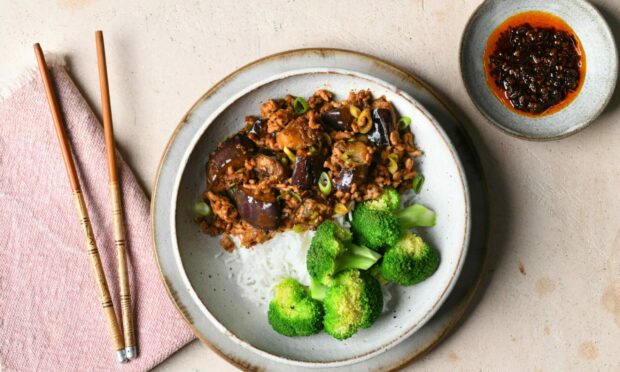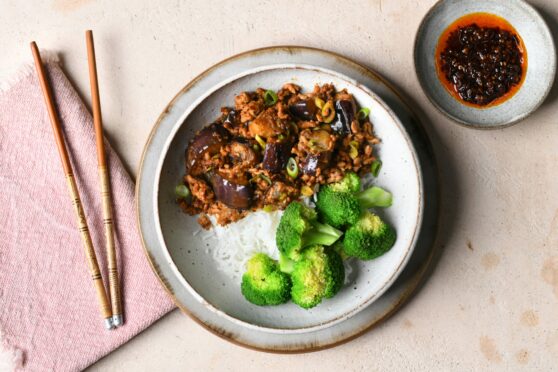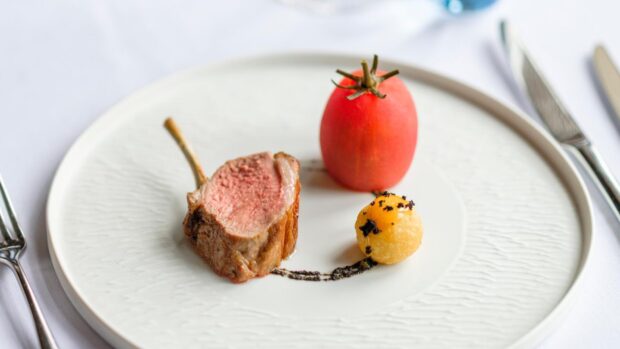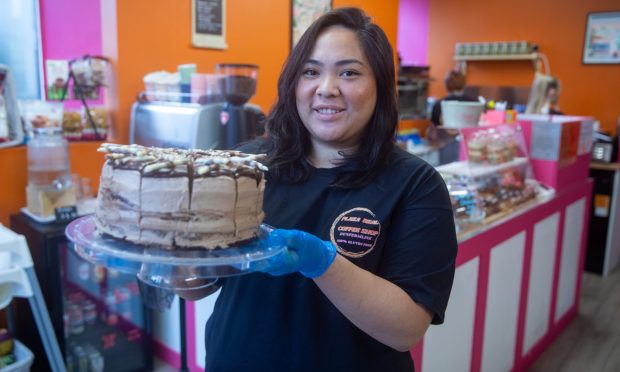Chinese wisdom holds the belief that our bodies should always be in balance and harmony.
This can be done by eating nourishing foods that are warming, cooling or neutral, depending on what our body may need at that time.
Essentially, this Chinese wisdom simply encourages us to be more present and in tune with our body, nourishing it with exactly what it needs so that we may live happy, balanced, healthy and fulfilled lives.
This recipe for country-style aubergine is one of five seasonal recipes inspired by Chinese wisdom, created by authentic Chinese sauce brand Lee Kum Kee and celebrity chef Ken Hom, CBE.
It is quite delicious because of its use of spices and seasoning – hot, spicy and sweet all at the same time. It sounds – and tastes – very Sichuan and indeed it is.
You can find it served in countless homes in the countryside throughout China. Pork mince is used in this comfort dish which makes it so economical. It is easy to make and reheats well, too.
Ken’s country-style aubergine
(Serves 4)
Ingredients
- 2 medium aubergines
- 2 tbsp vegetable oil
- 200g pork mince
- 2 cloves garlic, finely chopped
- 1 tbsp finely grated fresh ginger
- 2 tbsp Lee Kum Kee Sweet Soy Sauce
- 2 tsp white sugar
- 2 tsp Lee Kum Kee Chiu Chow Chilli Oil
- 120ml water
- Spring onion, trimmed and finely sliced
Method
- Trim and cut the aubergine into 2.5cm (1 inch) cubes.
- Place in a colander and leave them to drain for 20 minutes.
- Rinse them under cold running water and pat them dry with kitchen paper.
- Pour the oil into a wok or large frying pan and carefully heat.
- When it is very hot and slightly smoking, add the aubergine and stir fry for 4 minutes or until it is golden on all sides.
- Use a slotted spoon to lift the aubergine on to a plate.
- Add the pork to the hot wok and stir-fry for three minutes. Then add the garlic and ginger and stir-fry the mixture for two minutes.
- Add the soy sauce, sugar, chilli oil and water.
- Bring the mixture to the boil and return the aubergines to the wok.
- Continue to cook over high heat until the aubergine is tender and most of the liquid has evaporated.
- Sprinkle with spring onions, then serve at once or let cool and serve at room temperature.











